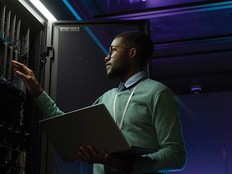IT Staff Can Optimize Resources with Single-Pane Visibility
Like HCI, superconvergence seeks to combine multiple aspects of data center operations and management at a single point, with the added benefits of integrated networking and sophisticated management tools.
That management piece may prove to be a key differentiator, offering a one-stop portal for a range of activities, says Shaun Snapp, a researcher at Brightwork Research & Analysis.
“That is where everything is visible — a single screen where everything is available to you,” he says. “It allows everything to be monitored very easily within an application. It shows the entire physical setup of the data center and everything that’s going on.” Improved visibility could help IT departments optimize their budgets by making maximum use of the resources at hand.
“In data centers, hardware is often underutilized. Some percentage of servers are just dead; they are not doing anything,” Snapp says. “This approach gives you the top-end view, so that you can know what is going on. Your waste is lower, you can better identify underutilized items, and overall efficiency is increased.”
MORE FROM EDTECH: What are the key considerations to scale GPU–ready data centers?
Superconvergence May Increase Flexibility, Customization
Superconvergence also could help teams stretch personnel resources.
“In higher education, we don’t have as many engineers who can wear a single hat. I don’t have a dedicated storage engineer or a dedicated systems engineer,” says Fred Hicks, director of infrastructure at Adelphi University. “If you can have an engineer trained on a single vertical platform, you will actually need fewer people to manage it.”
By freeing up personnel and potentially easing the strain on the IT budget, superconvergence “will enable IT transformation on campus, increasing flexibility for the location and management of enterprise workloads,” says Chris Wessells, a senior higher education strategist for Dell Technologies.
In the highly heterogeneous environment of university computing, superconvergence will allow for greater responsiveness to both academic and business needs, Wessells says.
In particular, he says, “it will enable more diverse and comprehensive disaster recovery and business continuity solutions, along with greater options for compliance and protection of personal and confidential data.”
Whether this promise is fulfilled will depend on how superconvergence is actually delivered, as this emerging methodology continues to take shape in the IT marketplace.
“It’s such a sexy term, but it is still so loosely defined,” Snapp says. “It’s still an unproven technology.”











